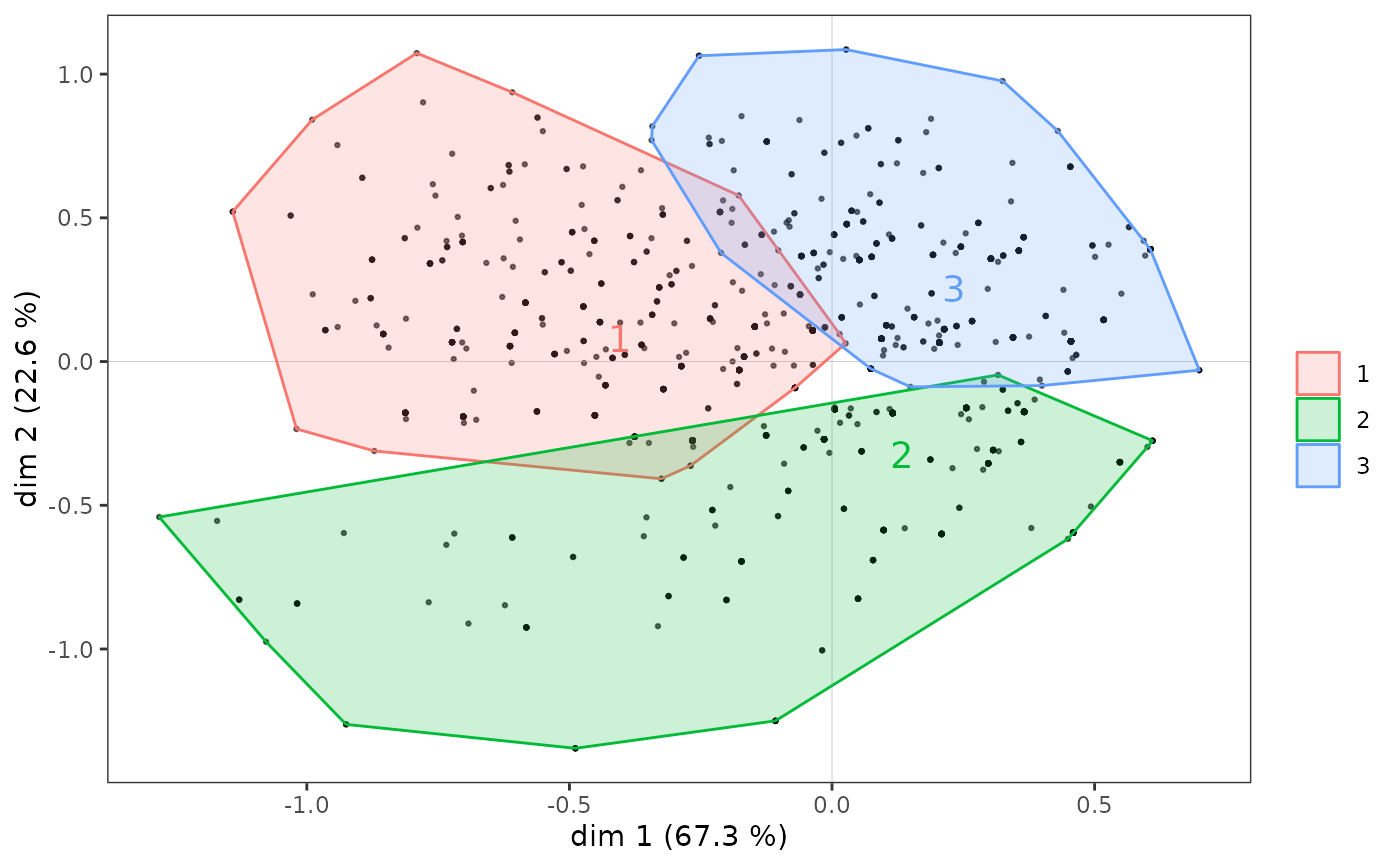Convex hulls for a categorical supplementary variable
ggadd_chulls.RdAdds convex hulls for a categorical variable to a MCA cloud of individuals.
Arguments
- p
ggplot2object with the cloud of individuals- resmca
object of class
MCA,speMCA,csMCA,stMCAormultiMCA- var
Factor. The categorical variable used to plot chulls.
- sel
numeric vector of indexes of the categories to plot (by default, ellipses are plotted for every categories)
- axes
numeric vector of length 2, specifying the components (axes) to plot. Default is c(1,2).
- prop
proportion of all the points to be included in the hull (default is 1).
- alpha
Numerical value from 0 to 1. Transparency of the polygon's fill. Default is O.2
- label
Logical. Should the labels of the categories be plotted at the center of chulls ? Default is TRUE.
- label.size
Size of the labels of the categories at the center of chulls. Default is 5.
- legend
the position of legends ("none", "left", "right", "bottom", "top", or two-element numeric vector). Default is right.
Value
a ggplot2 object
Note
Chulls are colored according to the categories of the variable, using the default ggplot2 palette. The palette can be customized using any scale_color_* and scale_fill_* functions, such as scale_color_brewer() and scale_fill_brewer(), scale_color_grey() and scale_fill_grey(), or scale_color_manual() and scale_fill_manual().
References
Le Roux B. and Rouanet H., Multiple Correspondence Analysis, SAGE, Series: Quantitative Applications in the Social Sciences, Volume 163, CA:Thousand Oaks (2010).
Le Roux B. and Rouanet H., Geometric Data Analysis: From Correspondence Analysis to Stuctured Data Analysis, Kluwer Academic Publishers, Dordrecht (June 2004).
See also
Examples
# specific MCA of Taste example data set
data(Taste)
junk <- c("FrenchPop.NA", "Rap.NA", "Rock.NA", "Jazz.NA", "Classical.NA",
"Comedy.NA", "Crime.NA", "Animation.NA", "SciFi.NA", "Love.NA",
"Musical.NA")
mca <- speMCA(Taste[,1:11], excl = junk)
# hierarchical clustering
# and partition of the individuals into 3 clusters
d <- dist(mca$ind$coord[, c(1,2)])
hca <- hclust(d, "ward.D2")
cluster <- factor(cutree(hca, 3))
# cloud of individuals
# with convex hulls for the clusters.
p <- ggcloud_indiv(mca, col = "black")
ggadd_chulls(p, mca, cluster)
